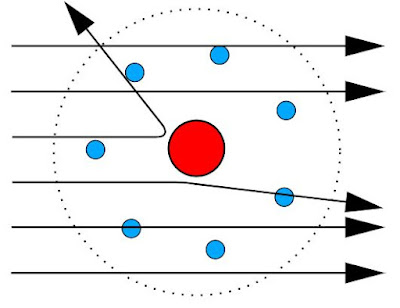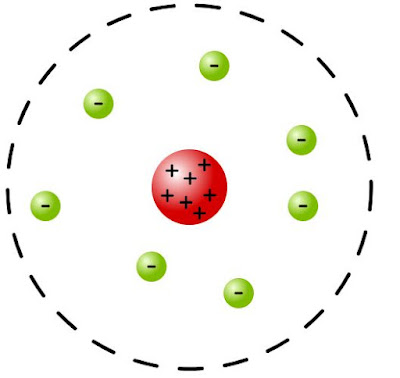
How A Rainbow Can Form Without Rain 😲

How Squirrels Use Physice In Daily Life?
I was sitting in a park nearby my house, bored, having listened to all the trending songs in one go, when I saw a couple of Squirrels jumping from tree to tree. They reminded me of Toby Maguire and Andrew Garfield as Spiderman. More importantly, I was astonished at how they were using the principles of physics to go about their daily lives...
Although squirrels or any other animal for that matter are not consciously aware of physics, they certainly interact with physical laws in fascinating ways. I am sure you, the reader, must have come across these 10 ways in which squirrels use physics in their everyday lives:
1. Parabolic Jumping: When squirrels jump from one branch to another, they follow a parabolic ttrajectory. Not only that, they spread their arms and legs as if they were birds to increase the surface area and lift force. I wonder if squirrels calculate the optimal angle and velocity needed to reach their destination.
2. Gravitational Potential Energy: When squirrels climb trees, they increase their potential energy. As they descend, they convert this energy into kinetic energy. I have seen them speed up and down the tree like it was nothing. Their bodies are also very elastic, which helps them in their daily chores. I wish I could climb a tree like that.
3. Friction for Grip: Have you noticed how Squirrels have sharp claws? Tiny but still firm. These claws allow them to grip surfaces with high friction. This friction is essential for climbing vertical tree trunks, allowing them to move quickly and stay stable while navigating tricky terrain. No wonder I can't climb with ease as my hands are always sweaty.
4. Elastic Potential Energy: Squirrels' tails act like a rudder and balance aid, but they also store and release elastic potential energy from their tail when the squirrel jumps or changes direction mid-air. This helps them land more precisely or correct their movement in mid-flight. The tail makes up and significant portion of their body weight and acts like a mechanism to (almost) fly.
5. Rotational Motion: When squirrels leap or fall, they can twist their bodies in mid-air, adjusting their orientation using their limbs and tail. This rotational motion allows them to land feet-first and avoid injury.
6. Energy Conservation: Squirrels run very fast, but for shorter periods of time. Like a Cheetah. This combination of high-speed running and short bursts of activity allows them to conserve energy while traveling long distances or evading predators.
7. Bouncing: When squirrels jump off hard surfaces or onto bouncy objects (such as a trampoline-like surface in a tree), their bodies absorb and release energy through elasticity, softening the landing and reducing the risk of injury.
8. Inertia and Momentum: When a squirrel is running at high speed and suddenly changes direction, its body mass and velocity create inertia, making it harder to stop. But with enough friction, it can quickly change direction without sliding, maintaining its momentum.
9. Gliding: There is a species of squirrels which flies, aptly called the flying squirrel. They have a fluffy membrane between their fore and hind legs, helping them to glide. The physics of air resistance helps them stay in the air longer and glide to distant points safely. Not all squirrels can glide long distances though, which is disappointing.
10. Balance and Center of Mass: Squirrels constantly adjust their center of mass as they move along narrow branches or leap across gaps. By shifting their body position and adjusting their posture, they maintain balance and stability to prevent falling. Have you noticed how they pose like Spiderman when they land? That's them adjusting their center of mass to make a safe fall.
In all these (and possibly more) ways, squirrels engage with the principles of physics in daily life, allowing them to thrive in their harsh environments.
5 Predictions of Nikola Tesla That Came True (And 5 That Didn't)

1. (Right) Alternating current
2. (Wrong) Interplanetary energy exchange
3. (Right) Smartphone

4. (Wrong) Unlimited free energy
5. (Right) Thought images, MRI
6. (Wrong) Wireless electricity

7. (Right) Wi-fi
8. (Wrong) Anti gravity tech
9. (Right) Robotics and automation
10. (Wrong) Weather control
Paul Dirac versus Richard Feynman

Dirac made a breakthrough, a new method of doing physics. He had the courage to simply guess at the form of an equation, and to try to interpret it afterwards.
No matter how beautiful an equation is, no matter who made the equation or how genius he was, if it disagrees with experiment, it is wrong!

10 Examples of Physics In Daily Life



Why Light Bends Because of Gravity If It Has No Mass?

Does light have mass?
Has general relativity been tested?

5 Amazing Inventions By Physicists We Use Every Day

1. Lever

2. Video games
3. Electric generator
4. Battery
5. X-ray
How Rutherford Became Father of Nuclear Physics

Introduction


Early life and career
Discovery of Nucleus

Summing up
10 differences between astrology and astronomy

1. Every newspaper in the world has a daily column on astrology. How many papers carry even a weekly column on astronomy? – this is a major, disappointing difference between the two fields, as pointed out by Carl Sagan.
2. Astronomy is a practical science built upon technical skills such as in observation, mathematics and computer programming. Astrology does not demand such complicated knowledge.
3. If you delete all of human history, astronomy will come up again in exactly the same manner since it is based upon facts and figures. Whereas, astrology is a product of the human imagination and will acquire different shapes and forms.
4. There is a Nobel Prize for astronomers who make great advances to our understanding of the universe – astronomy being a branch of physics. In astrology, there is no such honor.
5. According to astrology, the position of a planet such as Saturn can trigger a life changing influence on an individual located on some corner of the Earth. Astronomy denies this claim.
6. After decades of research, astronomy has reached to the conclusion that life on earth is made from elements that were forged in the core of dying stars – a poetically beautiful truth. Astrology could not have reached to this sophisticated result.
7. Historians say that astrology is 2,500 years old. On the contrary, astronomy is vastly older. The first human beings depended on astronomical events for various activities, such as in agriculture and navigation. This developed into questions like, "What's out there?" and into inventions like the telescope.
8. Hence, astronomy is a natural tendency (aka curiosity) whereas astrology is derived, from observations and results in astronomy. Astrology is something that people turn to thinking it would have answers to life's problems.
9. Astronomy is a healthy activity for kids to get involved in. Astrophotography is one way to get started. Whereas, a sincere belief in astrology puts children inside boxes and they grow up asking dumb questions like, "What's your star sign?" to measure compatibility.
10. Reading astrology may be comforting to some people, but at only a superficial level. On the contrary, astronomy appeals to the very core of a person and may inspire them to paint a timeless piece like the "starry night".
5 Niels Bohr Quotes On Quantum Mechanics

Niels Bohr was a Danish physicist who made pioneering contributions to understanding atomic structure and quantum theory, for which Bohr was recognized with a Nobel Prize in 1922. Bohr was an active participant in the new quantum theory revolution that shook the foundations of classical physics.
Einstein, who was not ready to accept Heisenberg's uncertainty principle, as one of the cornerstones of modern physics, commented: God does not play dice with the universe. Bohr made peace with the uncertainty principle by developing the principle of complementarity.
According to complementarity, particles have certain pairs of interdependent properties that cannot all be observed or measured simultaneously. For example: position and momentum make such a pair.
Bohr regarded complementarity as an essential feature of quantum mechanics. It is said that Bohr replied to Einstein, who preferred the determinism of classical physics over the probabilistic new quantum physics: (1) "Stop telling God what to do."
In 1920, Bohr met Heisenberg for the first time. Bohr said, (2) What is it that we humans depend on? We depend on our words... Our task is to communicate experience and ideas to others. But when it comes to atoms, language can be used only as in poetry. The poet, too, is not nearly so concerned with describing facts as with creating images and establishing mental connections.
Some physicists depended on mathematical analysis to make sense of the quantum world. However, Bohr was not satisfied. (3) Even the mathematical framework helps nothing, I (Bohr) would first like to understand how Nature avoids the contradictions. (1927)
Bohr said further: Our experience in recent years has brought light to the insufficiency of our simple mechanical conceptions and, as a consequence, has shaken the foundation on which the customary interpretation of observation was based.
We can still use the objectifying language of classical physics to make statements about observable facts. But we can say nothing about the atoms themselves.

In the 1927 Solvay conference, Bohr and Einstein went head-to-head on the metaphysical and philosophical implications of quantum mechanics. Two legends, one defending the new-age probabilistic physics and another fighting for classical determinism. At the end, it was Bohr who emerged victorious and successfully established the probabilistic character of quantum measurement.
Niels Bohr wrote in 1934: (4) Isolated material particles are abstractions, their properties being definable and observable only through their interaction with other systems. Everything we call real is made of things that cannot be regarded as real.
In a 1952 conversation with Heisenberg and Pauli in Copenhagen, Bohr quipped: (5) "Those who are not shocked when they first come across quantum theory cannot possibly have understood it." This was most likely a reference to Einstein, who not only contributed to the new theory but also immediately taken aback by its bizarre results.
Richard Feynman Explains The Circle of Life

Nobel prize winning American scientist, Richard Feynman, was fascinated by simple things. From rubber band to fire, Feynman was delighted to explain the physics of day to day items in easy and poetic language. Here, Feynman described the life cycle of a tree as an example to illustrate that life comes full circle.
Where does the structure of the tree come from? To find out, we must start at the beginning. It is understood that seed sown in the ground will develop shoot of the plant, as it reaches out for the sunlight. At the same time, a root spreads deep in the soil searching for water.
Capillary action helps bring water up into the roots when the soil has higher concentration of water than the root cells. It is like putting a wick in oil lamp. But capillary action can only pull water up a small distance, when the plant is small.
In a mature tree, liquid water flows into the woody stem and then into green leaves where photosynthesis will occur. How does it work against the effects of gravity? The answer is cohesive forces that help to move water to the furthest leaf.
In the green leaves, some part of the water is used for photosynthesis. The other part, due to heat from sunlight, escapes into the atmosphere as water in gaseous form. In fact, if you wrap a plastic bag around a leaf, you can actually see vapor condense inside the bag.
Since molecules of water in the root and stem stick tightly to one another because of cohesion, the vapors which escape from the leaves, kind of pull the remaining water, as a single unit, upward behind them. This process is called transpiration.
Going back to, where does the structure of the tree come from? Feynman comments: it is generally thought that plants grow out of the ground. However, apart from water and vital nutrients, the ground does not contribute in the building up of the tree.
Mass of the tree is primarily carbon and where does that come from? The atmosphere, but not in pure form, it comes as carbon dioxide. (In its lifetime, a tree soaks up tons of carbon dioxide from the air, which is why it is advised to plant more trees).
The absorbed carbon dioxide is reduced to pure carbon when acted upon by the sunlight. Trees utilize these carbon molecules to construct their body tissues, for example in the stem. The useless oxygen molecules, on the other hand, are spit back into the air.
Thus, a combination of water, air and light as they come from the ground, atmosphere and sun respectively, mediate the flowering and growth of the tree.

There is a beautiful end to the story. The tree is used as a fuel for combustion. When pieces of wood are rubbed, for example, heat is built up by friction and that leads to reunification of carbon molecules in the tree with oxygen molecules in the air, generating a "tremendous catastrophe" as Feynman puts it, fire.
If you think about it, this light and heat of the fire is the light and heat of the sun, that went in! Feynman says: it is kind of a "stored sun", that is coming out when you burn a log. Isn't it wonderful how nature manages to come back in a full circle?
Why We Can Never Build The Time Machine

Theory of relativity









 Physics, astronomy and science history blog for students
Physics, astronomy and science history blog for students